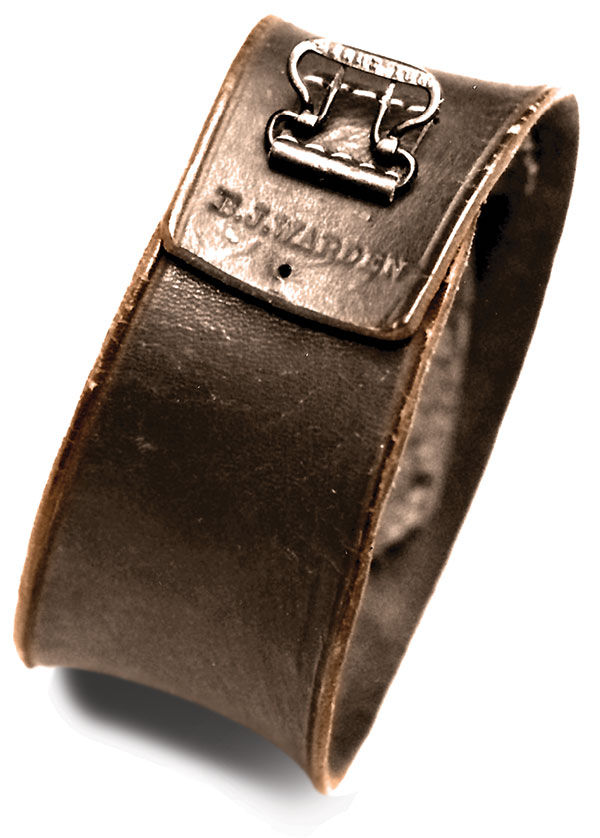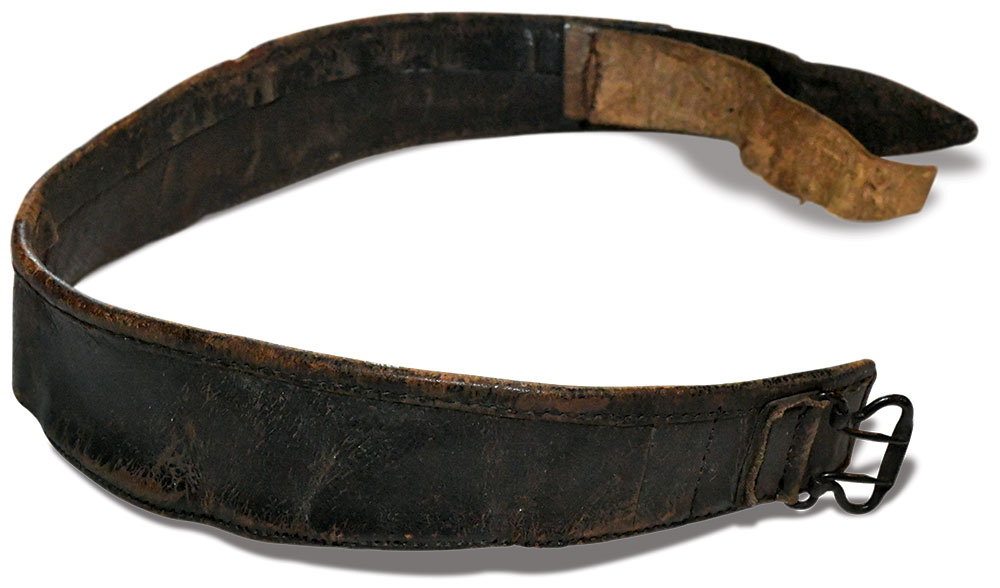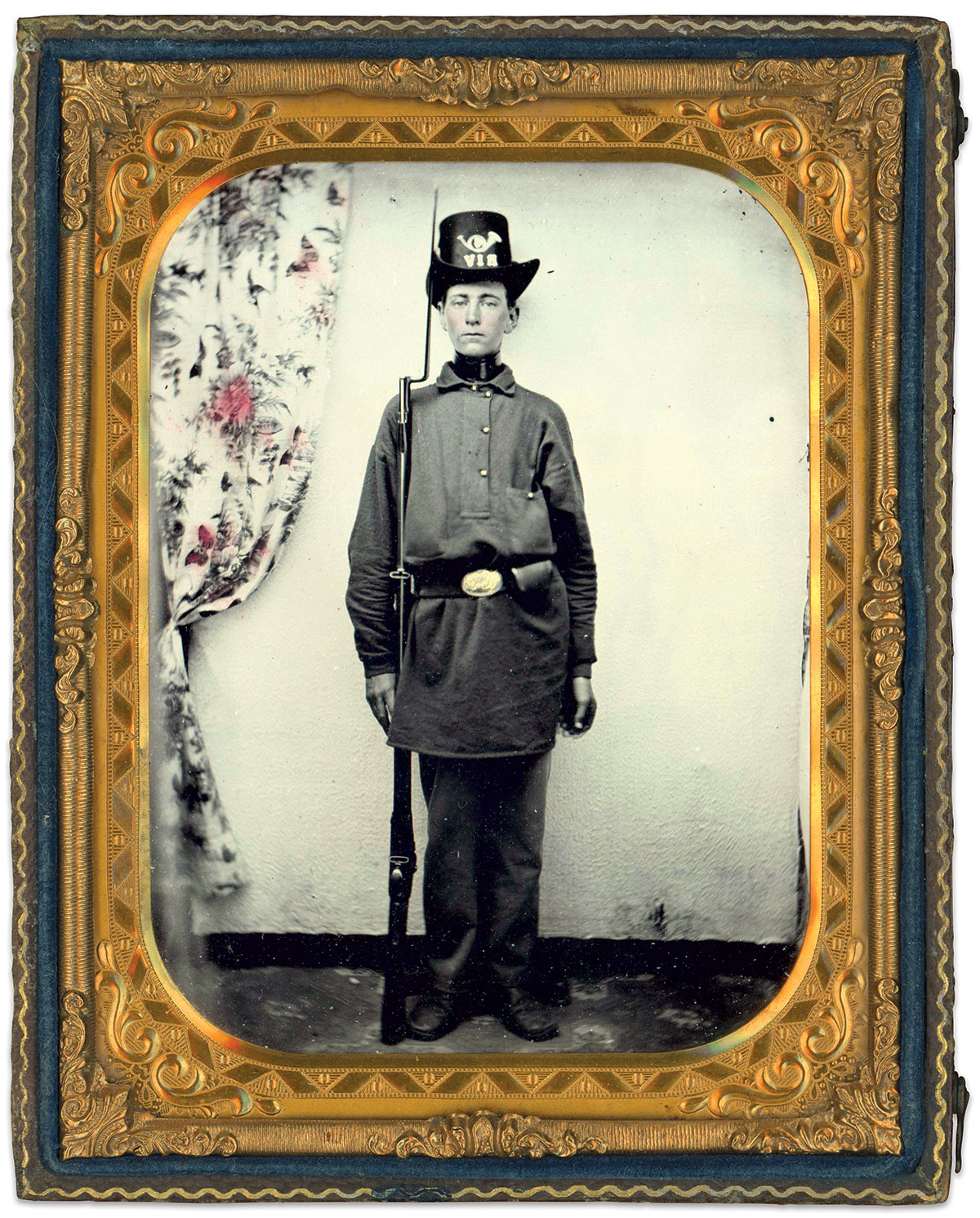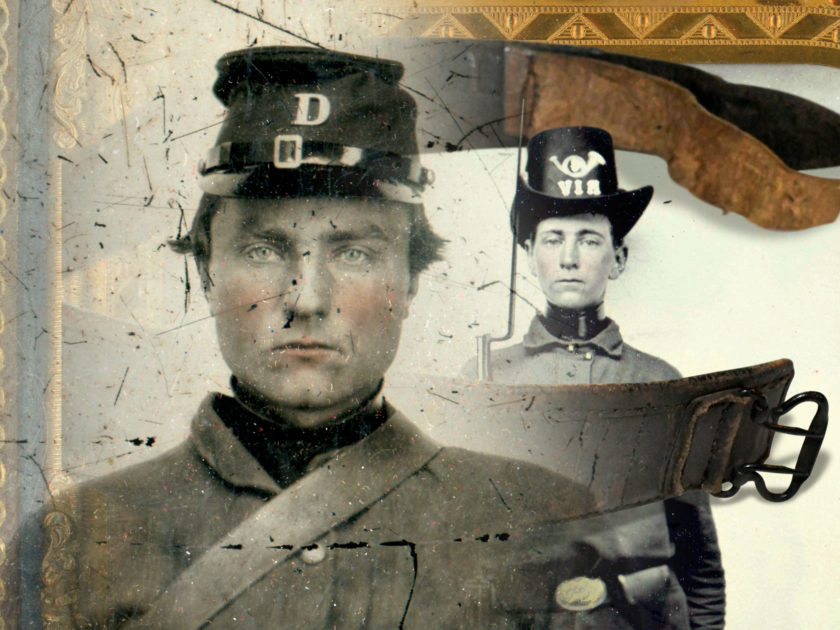By Frederick C. Gaede
Purpose and origins

The most practical purpose of leather neck stocks was that they kept the soldier’s chin up and gave him more of a military bearing. Another explanation holds that stocks protected the neck from cavalry saber cuts. But it is difficult to imagine such a relatively slim band of leather doing any good.
Stocks migrated from European armies to America during the second half of the 18th century. The early Marines wore them, and they remained part of their uniform through the Civil War and into the 1870s. The nickname “Leathernecks” came into use at some point to describe Marines. In the army, the stocks commonly went by the moniker “dog collars.”
How they were worn
Generally speaking, stocks wrapped around the neck and over the shirt, and were secured by strings, leather thongs or copper clasps. Two brief items in the 1851 Regulations for the Uniforms & Dress of the Army of the United States addressed the use of cravats and stocks:
- For all officers—black; when a cravat is worn, the tie is not to be visible at the opening of the collar.
- For all enlisted men—black leather, according to pattern.
An identical description also appears in the army’s 1857 and 1861 Revised Regulations.
In Civil War history
Stocks became largely obsolete, but they were used. The author found only eight contracts for leather neck stocks in the National Archives. A total of 467,000 stocks are referenced in these contracts, which date before the end of 1862. This date reflects the general abandonment of stocks.

Comments by those who wore them
Regular army Musician Augustus Meyers recorded being issued a neck stock in April 1854 in his memoirs, Ten Years in the Ranks, U.S. Army: “The most objectionable part of the whole uniform was the leather stock or ‘dog collar,’ as we called it, intended to serve as a cravat and keep the soldier’s chin elevated. It was a strip of stiff black shoe leather about two and one-half inches high and arranged to fasten at the back of the neck with a leather thong. It was torture to wear it in hot weather, but we found means to modify the annoyance by reducing the height of the stock and shaving down the thickness of the leather until it became soft and pliable.”
Sgt. Alexander G. Downing of the 11th Iowa Infantry recorded his wartime experiences with a stock issued to him in 1861:
November 4: “The part of our uniform most talked about and criticized is the leather collar, which each man has to wear. It is a piece of stiff upper leather about two inches wide in the middle, tapering to one inch at the ends, which are fastened with a buckle. We wear it about our necks with the wide part under the chin to make us hold our heads erect. These collars the boys call ‘Dog-Collars.’”
November 5: “We received strict orders today to take care of our equipment, especially our clothes and guns. Then we have to wear brass epaulets on our shoulders, which makes a great deal of extra work as they have to be kept polished.” This entry is footnoted, “When we once got into active service, these epaulets were discarded, and the ‘dog collars’ went with them.”
Examples


Frederick C. Gaede is the author of “Notes on Leather Neck Stocks for the U.S. Army, 1775-1871,” in the Winter 2017 issue of the journal Military Collector & Historian.
SPREAD THE WORD: We encourage you to share this story on social media and elsewhere to educate and raise awareness. If you wish to use any image on this page for another purpose, please request permission.
LEARN MORE about Military Images, America’s only magazine dedicated to showcasing, interpreting and preserving Civil War portrait photography.
VISIT OUR STORE to subscribe, renew a subscription, and more

